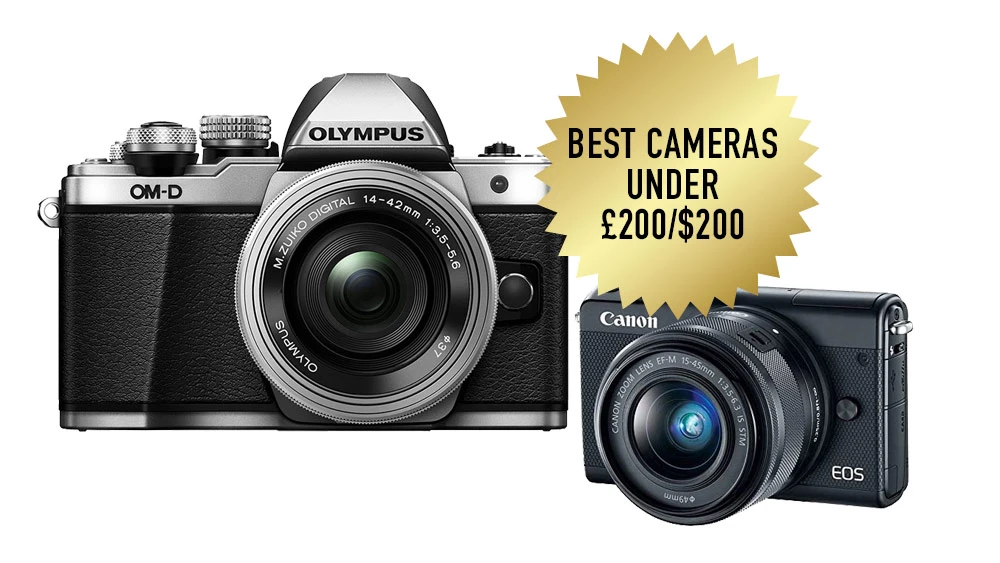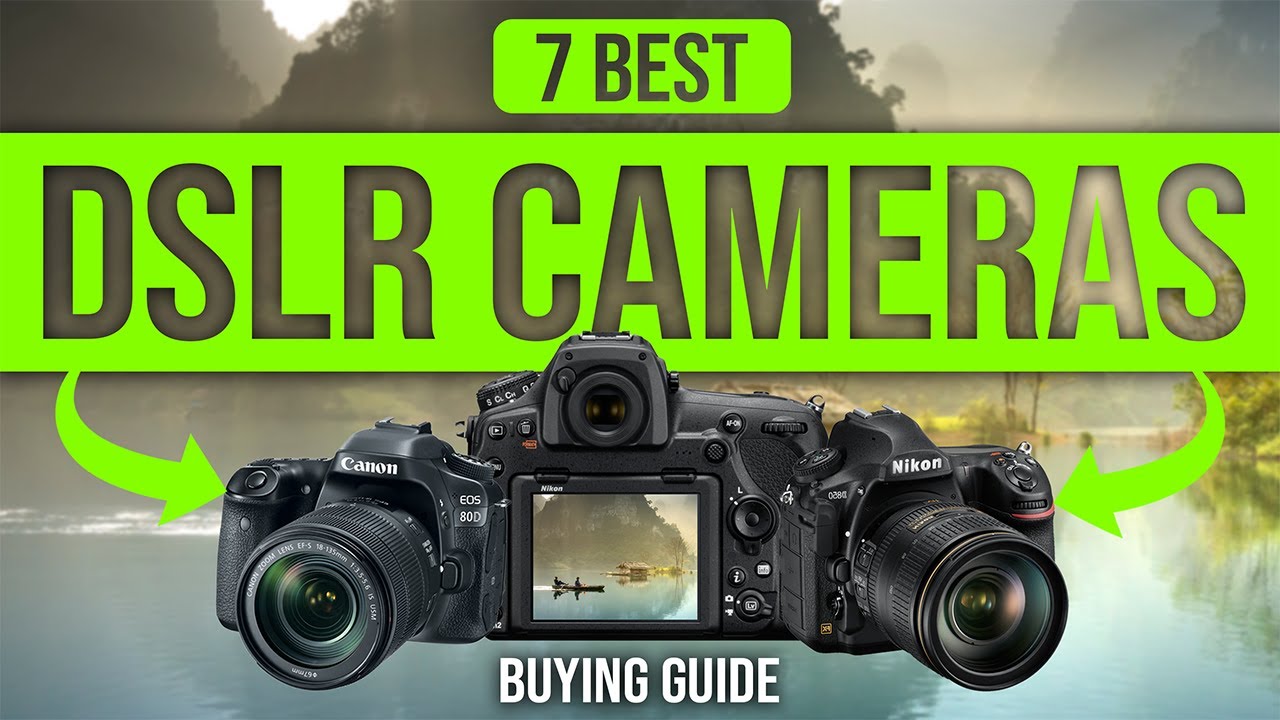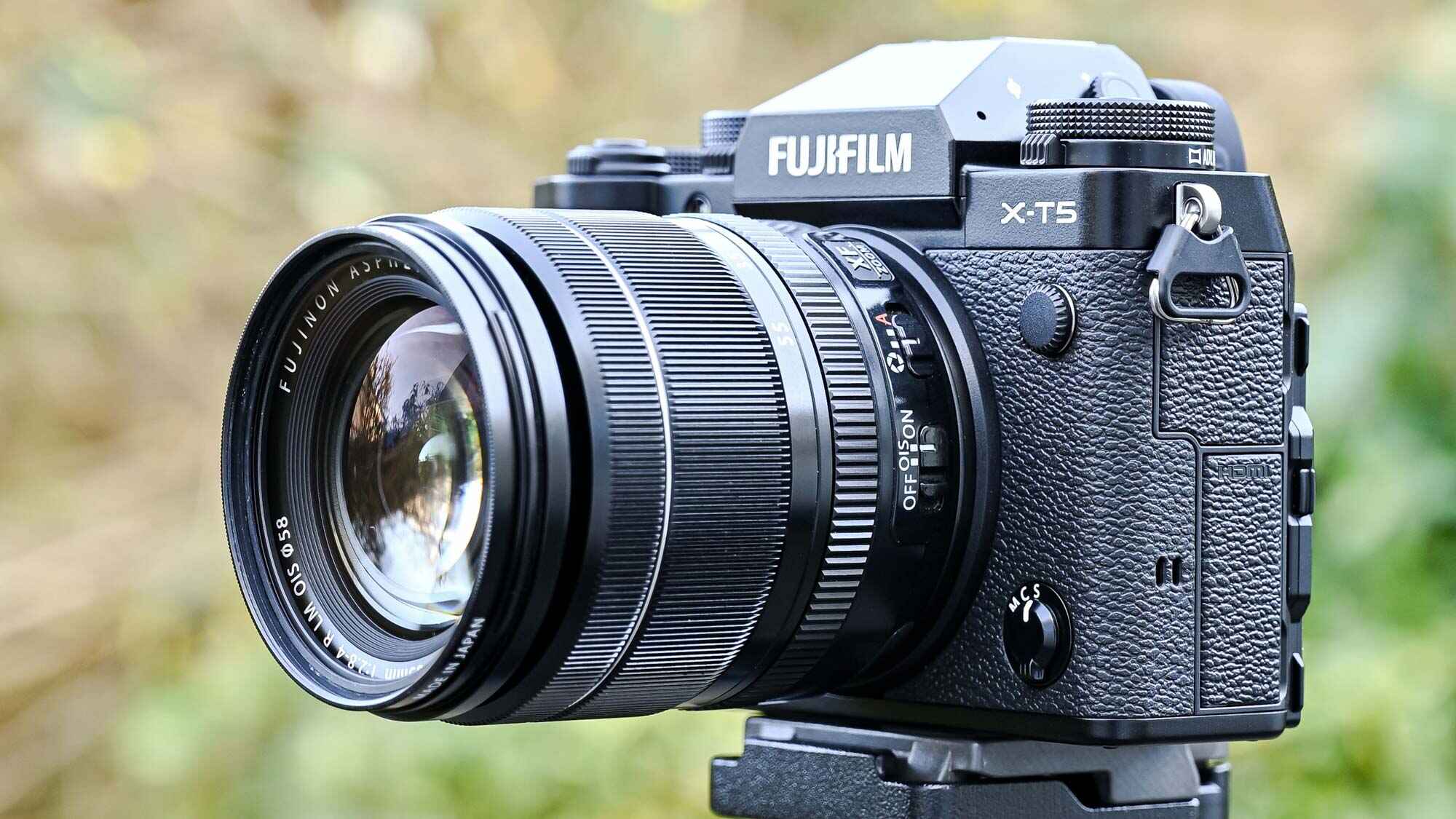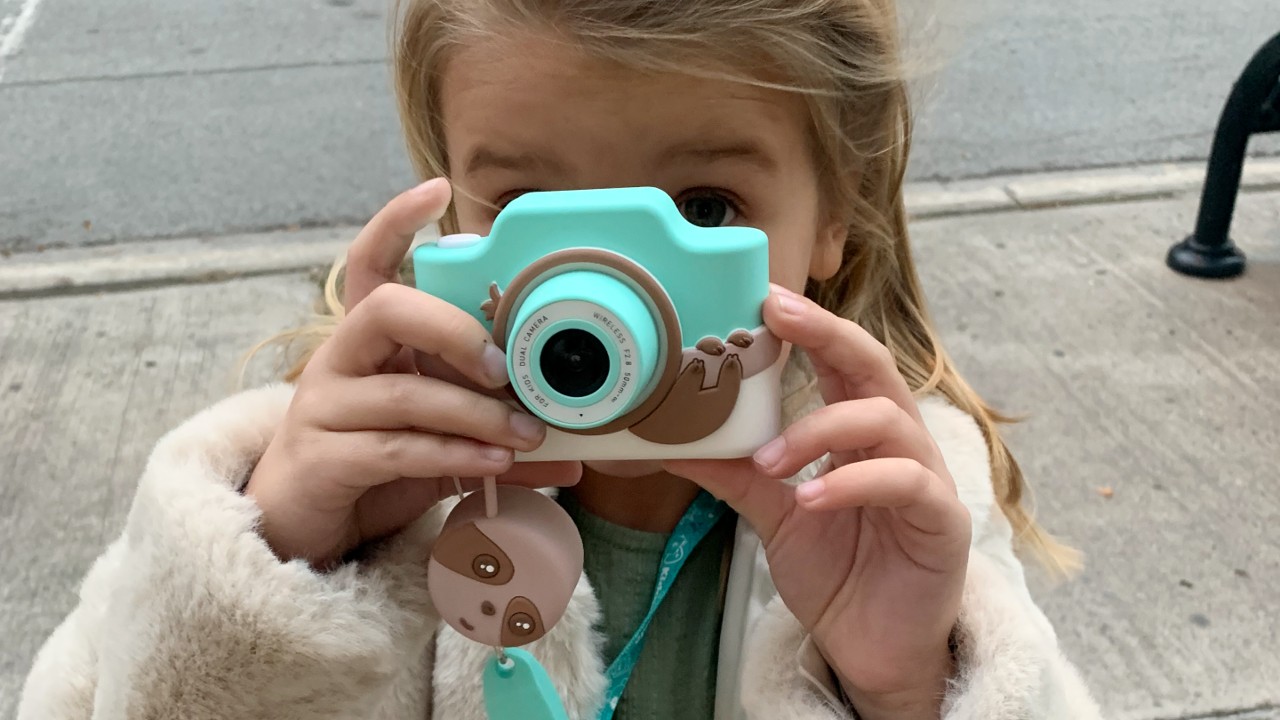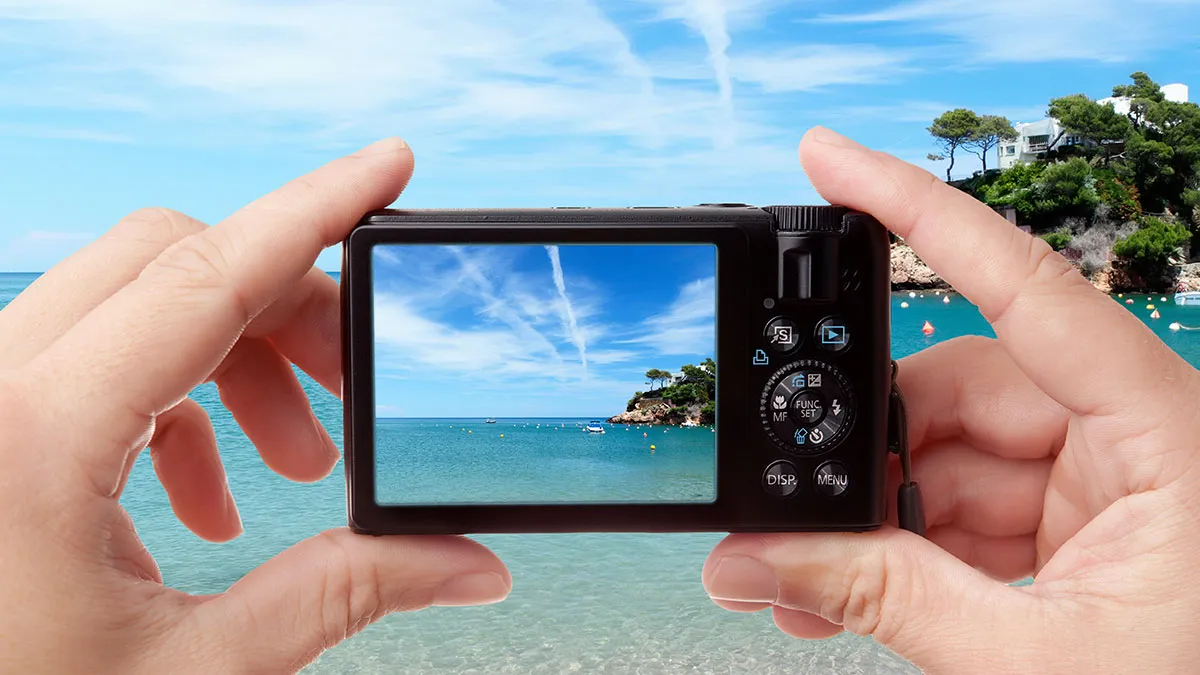Introduction
Welcome to the world of digital photography! With the advancements in technology, digital cameras have become an essential tool for capturing and preserving special moments. When it comes to choosing the right digital camera, one of the key factors to consider is the megapixel count.
Megapixels, a term commonly associated with digital cameras, refer to the number of millions of pixels in an image. In simple terms, it determines the resolution or detail that the camera can capture. As consumers, we often find ourselves questioning what constitutes a good megapixel count for a digital camera.
Understanding the importance of megapixels and how they affect image quality is crucial in making an informed decision. In this article, we will delve into the world of megapixels and explore the factors to consider when choosing the right megapixel count for your digital camera. We will also debunk common myths surrounding megapixels and shed light on the megapixels vs. sensor size debate.
By the end of this article, you will have a clear understanding of how megapixels play a role in digital cameras and be equipped to make an informed decision that suits your photography needs.
Understanding Megapixels
Before we dive into the world of megapixels, let’s clarify what they are. In simplest terms, a megapixel refers to one million pixels and is a unit used to measure the resolution of a digital image. Each pixel is a tiny dot that makes up the overall image, and the more pixels there are, the higher the level of detail and clarity in the image.
Megapixels are often cited as a crucial factor in determining the quality of a digital camera. However, it’s important to note that megapixels alone do not guarantee superior image quality. While a higher megapixel count can provide sharper and more detailed images, other factors like sensor size, lens quality, and image processing capabilities also play a significant role.
It’s worth noting that the term “megapixel” is commonly associated with digital cameras, but it’s also used in other contexts, such as smartphone cameras and computer displays. In these cases, megapixels refer to the resolution of the camera sensor or the display screen.
Another important point to understand is that the megapixel count is not indicative of the camera’s ability to capture light or handle low-light conditions. This is where the camera’s sensor size and other technical specifications come into play. So, while megapixels are an essential factor to consider, don’t solely rely on them when evaluating the overall quality of a digital camera.
Now that we have a basic understanding of what megapixels are, let’s explore their role in digital cameras and how they can impact image quality in the next section.
The Role of Megapixels in Digital Cameras
Megapixels play a crucial role in digital cameras as they determine the level of detail and resolution in the captured images. A higher megapixel count means more pixels are used to create the image, resulting in sharper and more detailed photographs.
One of the key advantages of having a higher megapixel count is the ability to produce large prints without compromising image quality. If you’re a photography enthusiast who enjoys printing and displaying your work, a higher megapixel count will ensure that your images maintain their clarity and sharpness even when blown up to larger sizes.
Furthermore, higher megapixels also allow for greater flexibility in cropping. When capturing an image, you may not always have the perfect frame. With more megapixels, you can crop a specific area of the image and still retain a sufficient level of detail. This is particularly useful in situations where you want to focus on a specific subject or remove distractions from the composition.
However, it’s important to note that there are limitations to the benefits of higher megapixels. Beyond a certain point, the human eye may not be able to distinguish the added detail. For example, if you primarily share your photos on social media or view them on a computer screen, a camera with a very high megapixel count may not provide noticeable advantages over a camera with a slightly lower count.
Additionally, higher megapixels can come at a cost. Files captured by cameras with higher megapixels tend to be larger in size, taking up more storage space on memory cards and requiring more processing power to handle. This can impact workflow, especially if you frequently take a large number of photos or frequently shoot in burst mode.
Ultimately, the role of megapixels in digital cameras is to provide photographers with the ability to capture detailed and high-resolution images. The desired megapixel count depends on your specific needs and usage scenarios, as well as considering other factors like sensor size, lens quality, and image processing capabilities.
Factors to Consider in Choosing the Right Megapixel Count
When selecting the right megapixel count for your digital camera, it’s important to consider several factors that align with your photography needs and preferences. Let’s explore these factors below:
- Intended Use: Determine the purpose of your photography. If you primarily share your photos on social media or use them for web content, a lower megapixel count may suffice. However, if you’re a professional photographer or have a passion for printing large format images, a higher megapixel count would be more suitable.
- Printing Size: Consider the size of prints you intend to produce. If you plan on printing large posters or gallery-quality prints, a camera with a higher megapixel count will ensure the image retains its detail and sharpness when enlarged. Conversely, if you only require standard-sized prints or digital use, a lower megapixel count may be sufficient.
- Storage Space: Take into account the amount of storage space available on your memory cards or hard drives. Higher megapixel counts result in larger file sizes, requiring more storage space. If you have limited storage capacity, you might want to consider a lower megapixel camera or ensure you have sufficient storage solutions.
- Processing Power: Consider the capabilities of your computer or editing software. Processing and editing high-resolution images from cameras with higher megapixels require more processing power and memory. Ensure your equipment can handle the demands to avoid slowing down your workflow.
- Budget: Megapixels can impact the cost of a digital camera. Higher megapixel cameras often come at a higher price point. Consider your budget and the value you place on image quality and detail when choosing the megapixel count that fits within your financial means.
- Other Features: While megapixel count is an important consideration, don’t overlook other features of the camera. Factors like sensor size, lens quality, image stabilization, and low-light performance play a significant role in overall image quality. Seek a balance between megapixels and these additional features to ensure a well-rounded camera that suits your needs.
By carefully evaluating these factors, you can choose a megapixel count that aligns with your specific photography preferences and usage scenarios. Remember that a higher megapixel count is not always synonymous with better image quality, so consider these factors holistically to make an informed decision.
How Megapixels Affect Image Quality
One of the key factors to consider when it comes to megapixels is how they affect the overall image quality. While it’s true that higher megapixels can provide sharper and more detailed images, it’s essential to understand the limitations and potential trade-offs.
When the megapixel count increases, the image resolution and level of detail also increase. This means that the camera can capture more information and finer details in the scene being photographed. As a result, images taken with higher megapixel cameras tend to have sharper edges, more defined textures, and greater clarity.
However, it’s crucial to note that image quality is not solely determined by megapixels. Other factors such as the quality of the camera’s sensor, lens, image processing algorithms, and the photographer’s skills also play a significant role.
In some cases, extremely high megapixel counts can lead to diminishing returns in terms of image quality. As the pixel size gets smaller to accommodate more pixels on the sensor, the ability to capture light effectively may be compromised, resulting in potential noise and reduced dynamic range.
Furthermore, higher megapixel counts can also highlight the limitations of the lens used. A high-resolution sensor can reveal any imperfections in the lens, such as chromatic aberration or distortion. That’s why it’s essential to pair a camera with the appropriate lens to fully take advantage of the higher megapixel count.
In practical terms, the benefits of higher megapixels are most noticeable when you view or print images at larger sizes. If you often make large prints or extensively crop your images, a higher megapixel count can help you maintain detail and sharpness even at larger scales.
However, if you primarily share your photos online or view them on smaller screens, such as smartphones or tablets, the difference in image quality between different megapixel counts may not be as pronounced. In these cases, other factors such as sensor size, low-light performance, and overall camera capabilities may have a more significant impact.
To summarize, while higher megapixels can contribute to better image quality, it’s important to consider other factors and strike a balance between megapixels and overall camera performance. Choosing the right megapixel count depends on your specific needs, intended use, and the balance of image quality and practicality that aligns with your photography goals.
Megapixels vs. Sensor Size: Which is More Important?
When it comes to image quality in digital cameras, there is an ongoing debate between megapixels and sensor size. Both factors play a crucial role, but understanding their differences and their impact is essential in making an informed decision.
Megapixels are often the first thing that people look at when comparing cameras. A higher megapixel count allows for more detail and resolution in the image. However, it’s important to note that megapixels alone do not define image quality. Other factors such as sensor size, pixel size, and image processing capabilities also contribute significantly.
Sensor size, on the other hand, refers to the physical dimensions of the camera’s image sensor. A larger sensor can capture more light, resulting in improved low-light performance, better dynamic range, and reduced noise. This means that larger sensors have the potential to produce higher-quality images, especially in challenging lighting conditions.
When it comes to choosing between megapixels and sensor size, it depends on your specific needs and photography style. If you prioritize capturing fine details or printing large-format images, a higher megapixel count can be advantageous. However, if you value image quality in terms of low-light performance, dynamic range, and overall image depth, sensor size becomes more critical.
It’s worth noting that cameras with larger sensors tend to have lower megapixel counts compared to those with smaller sensors. This is because larger pixels on a larger sensor can capture more light, resulting in better image quality. On the other hand, smaller sensors with higher megapixel counts may struggle to capture as much light, leading to potential image noise and reduced dynamic range.
Both megapixels and sensor size have their own advantages and limitations. If you’re a professional photographer or someone who frequently prints large images, a higher megapixel count combined with a larger sensor would be an ideal choice. However, if you primarily shoot in low-light situations or value image quality and dynamic range, opting for a camera with a larger sensor, even with a slightly lower megapixel count, may yield better results.
Ultimately, the choice between megapixels and sensor size depends on your specific requirements and photography style. It’s important to strike a balance and consider other factors such as lens quality, image stabilization, and overall camera performance to achieve the desired image quality.
Common Myths About Megapixels
When it comes to megapixels, there are several common myths and misconceptions that circulate among photographers and consumers. Let’s debunk some of these myths to help you make more informed decisions when choosing a digital camera:
- More Megapixels equals better image quality: While higher megapixels can provide finer detail and resolution, they are not the sole determinants of image quality. Factors such as sensor size, lens quality, and image processing capabilities also significantly impact the overall image quality.
- High Megapixels always lead to larger prints: While it’s true that higher megapixels allow for larger prints without sacrificing image quality, the size of the prints you can make also depends on the image sensor’s size, resolution, and image processing algorithms. It’s the combination of these factors that determines the optimal print size.
- All cameras with the same megapixel count produce identical image quality: The megapixel count is just one aspect of a camera’s overall performance. Different cameras have varying sensor technologies, image processors, and lens quality, which can significantly impact image quality, even at the same megapixel count.
- Camera phones with high megapixels are equivalent to digital cameras: While smartphone cameras have notably improved in recent years, they still have limitations in terms of sensor size and image processing capabilities compared to dedicated digital cameras. Despite having high megapixels, smartphone cameras may not deliver the same level of performance and image quality as dedicated cameras.
- More megapixels mean faster autofocus: Autofocus performance is primarily dependent on the camera’s autofocus system and processing capabilities, not the megapixel count. Higher megapixels may require additional computational power, affecting the processing speed, but it doesn’t directly correlate with faster autofocus.
It’s important to separate fact from fiction when it comes to megapixels. Understanding the limitations and how different factors interact is crucial in making informed decisions regarding camera purchases and evaluating image quality.
Remember, megapixels are just one piece of the puzzle. Consider other factors such as sensor size, lens quality, low-light performance, and overall camera capabilities to ensure you choose the right camera that suits your needs and delivers the desired image quality.
Conclusion
As we conclude our exploration of megapixels in digital cameras, it’s clear that they play a significant role in image quality and capturing fine details. However, it’s important to understand that megapixels are not the sole determinants of image quality. Factors such as sensor size, lens quality, image processing capabilities, and the intended use of the photos all come into play when evaluating camera performance.
When choosing the right megapixel count, it’s essential to consider your specific needs and preferences. If you’re a professional or an enthusiast who frequently prints large-format images and requires extensive cropping capabilities, opting for a higher megapixel count can be advantageous. On the other hand, if you primarily share photos digitally or view them on smaller screens, a slightly lower megapixel count may suffice.
It’s worth noting that image quality is a culmination of different factors, and the optimal balance may vary depending on your individual requirements. Considering factors such as sensor size, lens quality, low-light performance, storage capacity, and overall camera capabilities will help you make a more comprehensive decision.
Remember, in the pursuit of better image quality, it’s essential to seek a balance between megapixels and other critical aspects of camera performance. More megapixels can offer greater detail, but it’s crucial to pair them with appropriate lens quality, image processing technology, and consider how they interact with factors like sensor size and low-light performance.
Ultimately, the “right” megapixel count will depend on your intended use, printing preferences, and overall image quality expectations. By understanding the role of megapixels and how they interact with other variables, you can select a digital camera that best fits your photography goals and captures the world around you with stunning detail and clarity.








